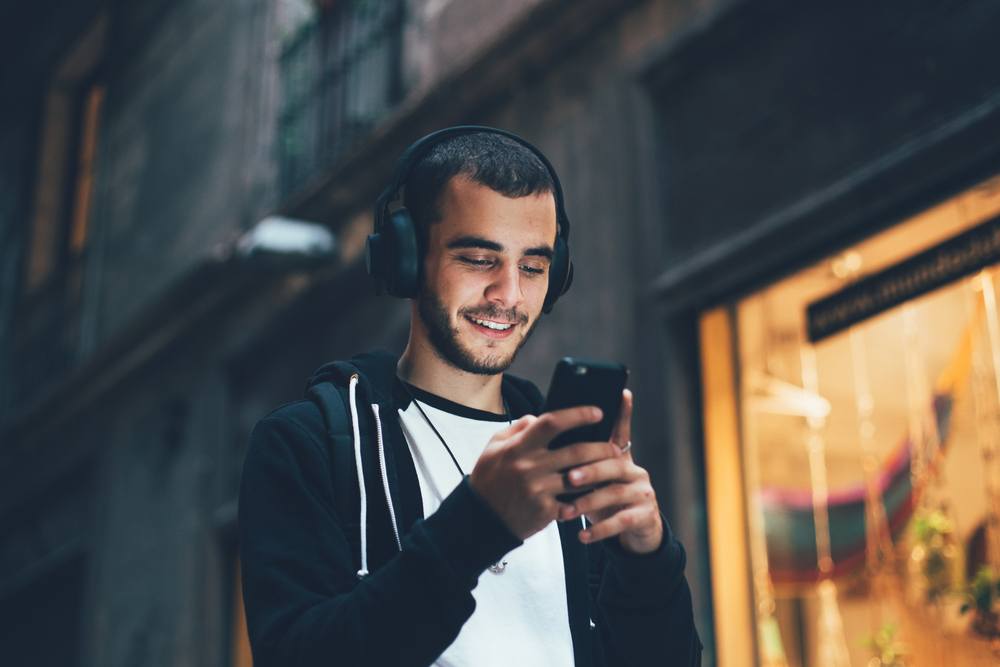
Meet James, a passionate music lover who perfectly incorporates Spotify into his work regimen, switches over to Pandora during his jogs, and curates playlists for every occasion conceivable, from cardio programs to cooking and even gaming. He’s seldom seen without his headphones, which have become an essential part of his daily life, transforming every moment into a personalized audio experience. James takes comfort and delight in the captivating realm of music, but the very source of his joy might be damaging his treasured ability to hear without him realizing it.
Regarding our ears, there are both safe and dangerous ways to indulge in music. Unfortunately, a lot of us lean towards the second option.
What is the link between prolonged exposure to music and hearing loss?
Over time, loud noises can lead to deterioration of your ability to hear. Hearing loss is typically connected to growing older, but the latest studies suggest that it is mostly triggered by damage from exposure to loud noises instead of being a natural part of aging.
It also appears that younger ears are especially susceptible to noise-related damage (they’re still forming, after all). However, teenagers tend to dismiss the possible dangers of excessive noise over time. An increasing number of young individuals are experiencing hearing loss due to frequent use of loud headphones.
Can one listen to music without any safety issues?
Unregulated max volume is obviously the” dangerous” way to listen to music. But there is a safe(er) way to enjoy your tunes, and it normally involves turning the volume down. The general guidelines for safe volumes are:
- For Adults: No more than 40 hours of listening on a device, and maintain the volume lower than 80 dB.
- If you’re under 18, 40 hours is still ok, just be sure to keep the volume at a safe level, 75 decibels or lower.
Forty hours week is roughly five hours and forty minutes a day. That might seem like a lot, but it can go by relatively quickly. In spite of this, most individuals possess a well-developed awareness of time management, a skill that is usually mastered during early childhood.
The more challenging aspect entails tracking your volume level. Technologies like smartphones, computers, and TVs usually do not show volume in decibels. Its value is calculated using a somewhat subjective or relative scale. The range could be as broad as 1 to 100, or it might be as small as 1 to 16. You might be unaware of the maximum volume range of your device or how close you are to reaching that limit.
How to properly track your music volume
To address this problem, a number of free noise tracking applications are available for both iPhone and Android devices. These apps offer immediate feedback on ambient noise levels, helping users to fine-tune their listening volume to safe levels.
That’s why the majority of hearing specialists recommend the use of one of many free noise tracking apps. These apps– widely available for both iPhone and Android devices– will give you real-time readouts on the noises surrounding you. That way, you can keep track of the dB level of your music in real time and make adjustments.
A volume comparison: garbage disposals and more
By way of illustration, 80 dB is approximately equivalent to the noise emitted by a typical garbage disposal or dishwasher– audible, yet not overly loud. Identifying this volume level is significant because it marks the point at which hearing loss becomes a real and tangible worry.
So, being extra vigilant when surpassing this decibel limit is important. Consider decreasing your exposure to exceedingly loud music by listening to certain songs at the highest volume instead of listening to entire albums.
Extended exposure to loud sounds can lead to hearing problems, including ringing in the ears, or tinnitus, and potentially permanent damage to one’s hearing. By being mindful of when our ears are at risk, we enable ourselves to make educated choices in order to promote safer listening habits.
Schedule a hearing exam
For better prioritization of your hearing health, it is recommended to consult a hearing professional to book a thorough hearing test. Taking proactive actions like consistent assessments can pinpoint possible problems at an early stage, enabling prompt actions and tailored advice to safeguard your valuable hearing.